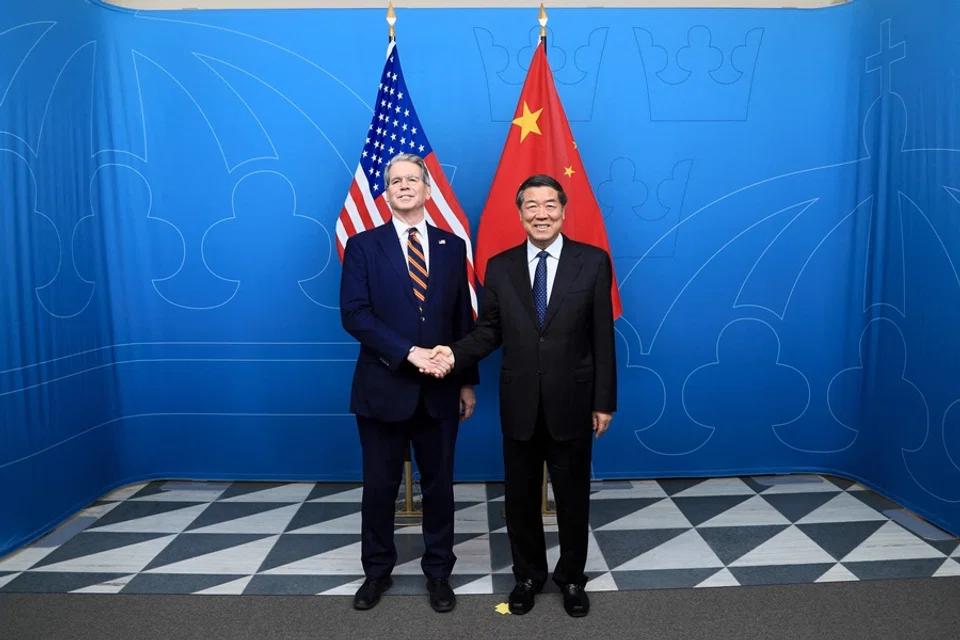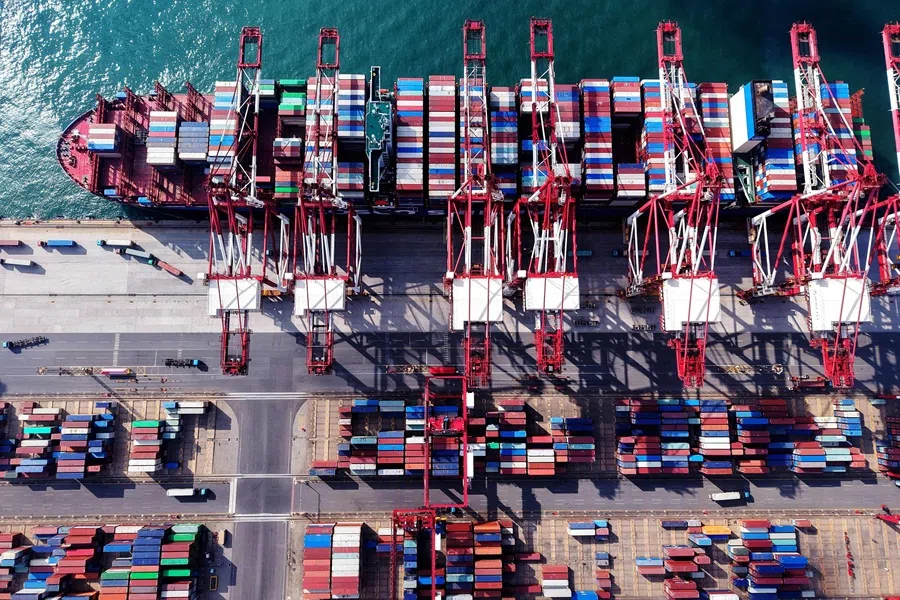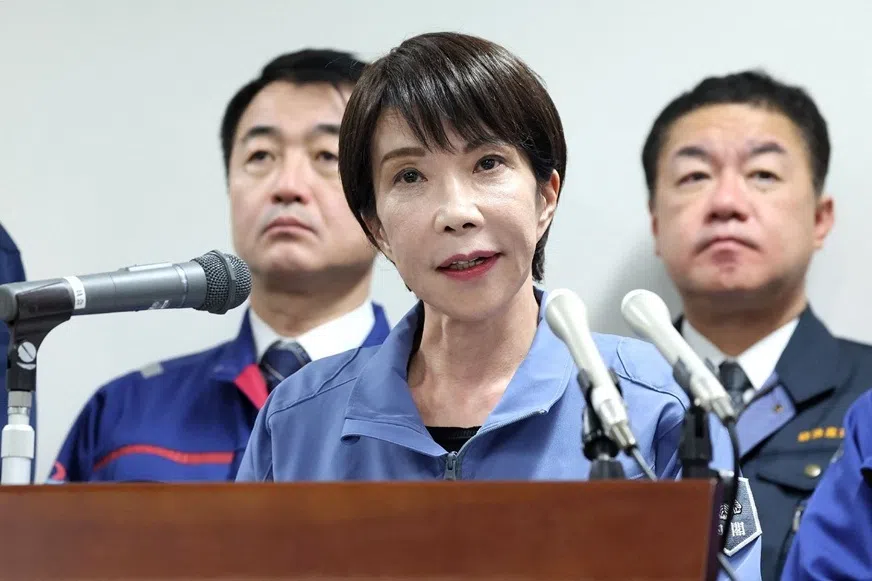US-China tariff truce: Quiet compromises set the stage for a long trade war
China and the US quietly made key compromises during the Stockholm talks and agreed to extend their trade truce for 90 days. But will this lead to real progress or just more stalled rhetoric? Lianhe Zaobao associate editor Han Yong Hong gives her take.

As widely expected, the third round of China–US trade talks in Stockholm concluded with only one external announcement: both sides agreed to extend the 90-day “truce”, initially reached in Geneva on 12 May, for an additional 90 days beyond its scheduled expiration on 12 August. However, US Treasury Secretary Scott Bessent emphasised at the press conference that the extension still required final approval from President Donald Trump.
At the start of this round of talks, sources cited by Hong Kong media had already revealed that China and the US were expected to extend the negotiation period by three months, during which the trade war would not escalate.
Expected result for Beijing
This was an indirect signal from Beijing that a “90-day extension” was the expected outcome. By that time, it would be September, making it highly likely that Chinese President Xi Jinping and US President Donald Trump would have the opportunity to meet — either with Trump visiting China or both leaders convening at a third location. Larger deals would then be negotiated directly between the two leaders, with any positive developments announced only after their summit.
For China, the extended trade truce offers a welcome reprieve: an additional 90 days of breathing room that could help sustain economic growth in the second half of 2025. This comes as China’s economy grew by 5.3% in the first half of the year, exceeding expectations. The Chinese Communist Party (CCP)’s Politburo meeting on 30 July further assessed that China’s “major economic indicators are good” and that the economy has shown “strong resilience” thus far in 2025, suggesting it has withstood US tariff pressure.
These moves — China easing its rare earth export ban and the US loosening restrictions on H20 chip sales — serve as clear signs of mutual compromise.
For most of the first half of 2025, Chinese exports faced approximately 30% tariffs imposed by the current Trump administration. (This figure excludes tariffs from Trump’s first term but includes the 20% tariffs related to the fentanyl issue.) However, an “export rush” by foreign trade enterprises helped to mitigate the impact of these tariffs.

If one factors in the 34% “reciprocal tariff” announced by the US on 2 April, along with the 20% “fentanyl tax” and the existing tariffs from Trump’s first term, the total tariffs on Chinese exports to the US would reach approximately 70%. Such a level would render Chinese exports unprofitable. Beyond the US, where else could China find a market of comparable size?
Who has the edge?
At first glance, neither side made significant concessions during the Stockholm talks. China maintained its 10% retaliatory tariffs on US goods, standing out as the only country willing to push back against the US and thus preserving its national pride. Meanwhile, the US tariffs on China remain 20% higher, allowing the Trump administration to project an image of advantage.
However, there were subtle but significant shifts during the talks: Nvidia’s H20 chips were recently approved for sale to China, while US Trade Representative Jamieson Greer openly acknowledged at the Stockholm press conference that China’s most notable concession was lifting its complete halt on rare earth magnet exports, allowing the US renewed access to these critical materials.
These moves — China easing its rare earth export ban and the US loosening restrictions on H20 chip sales — serve as clear signs of mutual compromise. It is also evident that both sides have likely made further concessions behind closed doors.
... both parties appear to recognise, after weighing the pros and cons, that neither currently has the strength to corner the other — making the extension of the truce their most viable consensus.

Some academics speculated in private that the limited information released by the Chinese side after the two recent meetings suggests significant behind-the-scenes compromises. Others interpret the sole outcome — the agreement to extend the truce — as an indication that China has little room left to make further concessions.
Deals made off stage
While neither side has disclosed specific details, it is clear that undisclosed deals were struck. At the same time, both parties appear to recognise, after weighing the pros and cons, that neither currently has the strength to corner the other — making the extension of the truce their most viable consensus.
Over the past week, the US has reached tariff agreements with close allies Japan, the European Union (EU) and South Korea. US tariffs on these partners have been lowered to 15%, but the terms of exchange are highly demanding.
According to a White House statement, Japan will invest US$550 billion in US-designated sectors, with the US retaining 90% of the profits from this investment. Japan is also required to purchase US$8 billion worth of agricultural products and fertilisers, and open up its market to rice and other farm goods.
The EU has committed to purchasing US$750 billion worth of US energy exports and increasing investments by US$600 billion. Meanwhile, Trump claimed that South Korea will invest US$350 billion in US-owned and controlled projects personally selected by him, along with an additional US$100 billion purchase of energy products.
Japan and the EU’s major concessions to the US reportedly came as a surprise to China.

Japan and the EU’s major concessions to the US reportedly came as a surprise to China. Although China may feel somewhat relieved that its own outcome was less severe, it is likely taken aback by the US’s open use of power and market access as leverage to pressure and compel the EU and Japan to yield. Furthermore, it is becoming increasingly clear that the US is employing tariffs not merely as economic tools but as strategic instruments to advance broader geopolitical objectives.
This evolving dynamic reflects a deepening China-US rivalry that extends well beyond tariffs. The US is not only ramping up investment in its rare earth industry but is also using these tariff measures to strengthen economic and trade ties with its allies, solidifying its position in the global economic landscape.
A long way to go
Recognising this as a protracted battle, China is pursuing a dual strategy. It is strengthening international relationships across the global south, Latin America, Africa, ASEAN and BRICS countries, while simultaneously focusing on developing its domestic market and boosting demand. Consequently, a reshaping and fragmentation of global supply chains and trade patterns is already underway.
Some observers suggest that the upcoming 15th Five-Year Plan (2026–2030), soon to be set by the CCP Central Committee, will focus on pushing back against US pressure — emphasising counter-sanctions, counter-containment, and efforts to break through strategic encirclement.
To achieve this, China will prioritise technological development — including AI and new energy — and raise household incomes to boost consumption. One high-profile initiative is the construction of a major hydropower dam on the lower reaches of the Yarlung Zangbo River, a project likely to become a cornerstone of Xi Jinping’s political legacy, with significant implications for both China’s economy and the local environment. Over the next five years, China’s economic structure and the global trade landscape are set for major changes.
This article was first published in Lianhe Zaobao as “中美贸易休战再展延”.



![[Big read] China’s 10 trillion RMB debt clean-up falls short](https://cassette.sphdigital.com.sg/image/thinkchina/d08cfc72b13782693c25f2fcbf886fa7673723efca260881e7086211b082e66c)

